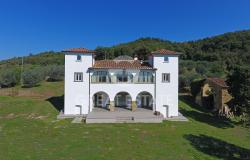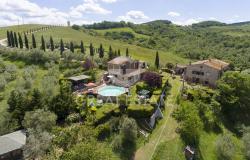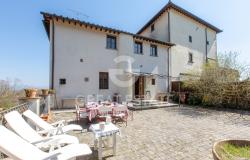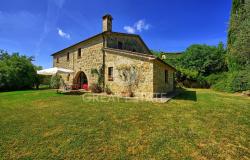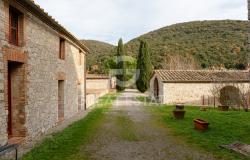We all want to come home from Florence with a special souvenir, but selecting which leather bag or jacket is the right choice can be overwhelming. Take one glance at the hundreds of jackets flapping in the breeze in the San Lorenzo market, and you will realize how intimidating leather shopping in Florence can be. How do you know if you’re buying something authentic and high quality, something made locally and in a traditional way? How do you gauge how much you should pay, and how do you know if you’re being ripped off?
Opportunities to buy leather in Florence are vast, from luxury boutiques, to raucous street bazaars, to private workshops and sidewalk trinket sellers. Read on to ensure that you go home with an authentic leather souvenir to treasure for a lifetime.
A Centuries-Old Trade
Florence and its region have held a reputation for quality leather production for hundreds of years. However, prior to the Industrial Revolution, preparing animal hides to make leather was considered particularly unsavory work. In medieval Florence, many of the tanneries, or conciatori, were located along the Arno in order to facilitate washing away the mess and unpleasant smells that characterized the trade.
By the 1300s, some 1,500 shoemakers were already working in the city. About a third of these settled in the Oltrarno district. Cobblers made shoes for local consumption, but also participated in a lively export trade, forming the roots of the Tuscan international leather fashion industry that still thrives today.
In addition to apparel, leather specialists were also an integral part of the book trade. They produced parchment sheets made from cured sheepskins. Leather covers were crafted to protect the books and provide a luxurious and beautiful exterior. Leather workers also pioneered techniques for armor and ceremonial dress, and worked with saddle and tack makers to create horse regalia for festivals and everyday use.
In the early twentieth century, the Florentine leather industry was propelled to new heights. A Florentine named Guccio Gucci, son of a leather artisan, turned his back on the family business as a young man. Working in a series of menial jobs at the Savoy Hotel in London, he carried stylish pieces of luggage for wealthy visitors. Gucci returned home to Florence in 1921 and refocused his family on designing fine leather luggage and accessories for a wealthy international clientele. He soon brought the leather goods of his native city to international fame as one of the most recognized names in the fashion world.
How Leather is Made
Today, the tanning and working of leather is much more complicated than it was in the days of those malodorous medieval tanneries along the Arno. In fact, the production and sale of leather products in Italy is an extraordinarily complex topic that touches culture, history, fashion, economy, and the very core of Italian self-identity. In order to grasp this complicated world of Italian leather, it helps to think about the industry as divided into three tiers:
• Industrial: The industrial sector employs tens of thousands of workers and represents a major force in Italy’s economy. Many of the Italian leather jackets, purses, belts, gloves, and shoes carried in chic apparel shops around the world are produced in enterprises concentrated outside of Florence. The hides are prepared in small to medium-sized firms across Tuscany, with a concentration of such companies scattered between Florence and Pisa. Many of the items you see in the leather shops or pelletterie of Florence were made in these medium-sized industrial enterprises in the Tuscan countryside, and distributed to the shops via wholesalers.
• Luxury-branded: These leather goods are intended for resale in the boutiques of some of the most recognized Italian luxury brand names in the international fashion world. Here’s where things get complicated, since much of the perceived value of the luxury leather brands lies in the selection and treatment of the raw materials, as well as in the craftsmanship behind each finished piece. Many luxury companies subcontract at least some aspects of production to those companies in the industrial sector—the same ones who make leather for cars and sofas. They may outsource the procurement and preparation of hides, as well as the cutting and stitching of bags, jackets, skirts, dresses, gloves, and other items. On the other hand, most of the luxury brands also make sure that certain signature items are hand-finished in house by skilled artisans. For the most part, it’s accurate to view these luxury-branded items as a hybrid of industrial and artisanal production, as the fundamental business of these luxury companies relies on selling on well-made, high-quality products on a large scale.
• Artisanal: Last but not least are the individual artisanal leather producers. Florence boasts many of these unsung masters of leather, and it’s worth the effort to seek them out for their beautiful pieces, as well as the opportunity to watch them work. Here the focus is less on the preparation of hides and more on the craftsmanship of cutting, fitting, sewing, stitching, and hand-finishing a custom work. Today, fully handcrafted leather production in Florence focuses on bookbinding and the making of small objects such as boxes and desk sets. One such example you can see at Legatorio il Torchio di Erin Ciulla at Via de' Bardi, 17. There are, however, a handful of leather artisans making gloves, shoes, bags, and other fashion accessories completely by hand, our personal pick is the historical Madova on Via de' Guicciardini, 1/red.
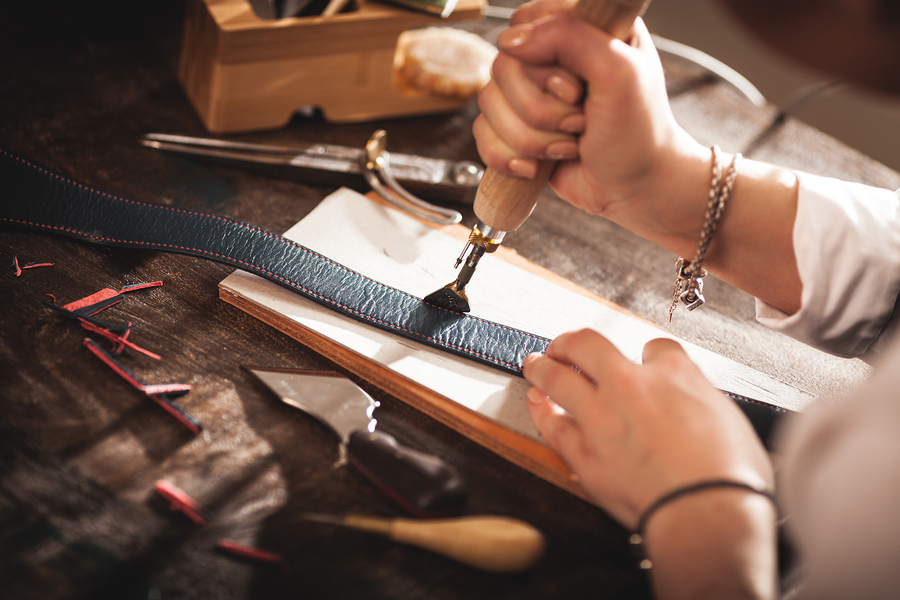 An artisan detailing a leather belt.
An artisan detailing a leather belt.
How to Judge Leather Quality
Imagine that you could take an animal hide and examine a cross-section of it under a microscope. At the top layer, you would see the pores of the skin, scars and imperfections, hair follicles, and the hairs themselves. Directly beneath, you would find thick, densely woven tissue with many overlapping fibers. Below that, you would see another layer of fibers, less dense and laid out in a more horizontal pattern. Today, most hides go through special machines that skim off each of these individual layers. Determining leather quality is based on what happens next:
• Full-grain (pieno fiore): Full-grain leather is considered the best that money can buy. It represents the top layer of the hide, and has usually not been sanded, so that you can still see scars, imperfections, and pores. Full-grain leather is considered desirable for its supple texture and durability, natural aroma, and its ability to take on a beautiful patina over time. The key term to look for is pieno fiore (cuoio pieno fiore or pelle pieno fiore).
• Top-grain (parte grano or cuoio di grano): Top-grain leather showcases that densely packed grain or patterning of the top layer of the pelt, but it has been sanded to remove some of the imperfections. Sometimes Italians don’t make strict distinctions between full-grain and top-grain leather, so there can remain some ambiguity even though top-grain leather is still considered very high quality in Italy.
• Genuine (vera pelle or vero cuoio): Genuine leather is cut from the bottom half of the hide and reveals no grain even though it may still be supple, rich in color, and retain a pleasant aroma. Suede is an example of genuine leather.
• Bonded (cuoio rigenerato): Bonded leather results from the detritus of the leather-making process—leather dust, shavings, and excess pieces—that have been swept up and pressed together in the factory with the aid of various chemicals, dyes, and glues. Be careful: bonded leather is often spray-painted to resemble natural leather grain. Your nose will tell you whether the piece smells like a cow or Superglue.
• Imitation: If you want authentic leather, steer clear of simipelle (imitation leather). However, ecopelle (a more appealing-sounding name for the same thing) might be a more attractive solution for those who do not buy animal products at all.
How to Buy Florentine Leather
When it comes to leather bags and apparel, things are not always what they seem on the surface. You may find a reasonably priced bag on the street whose quality equals an item in a high-end boutique. Other times, the same merchant may sell the same bag in a pelletteria and also in a market stall, at two very different prices. Sometimes a merchant may sell both industrially and artisanally made pieces in the same location.
If you’re serious about going home with a quality leather souvenir, you should know a few tricks of the Florentine leather-shopping trade. First, if you can buy directly from the maker, that’s the best guarantee of knowing exactly what you’re buying. However, in Florence buying leather directly from an artisan is only easy when buying small, portable items like boxes, wallets, and change purses. Most apparel items are sold in small retail shops. In this case, what you buy is more important than where you buy. Try to divorce the handbag or jacket from its setting if you can and focus instead on the quality of the individual piece.
Selecting Leather Goods
When it comes to evaluating leather quality, try to forget whether you’re in a bustling street market or a high-end boutique. Instead, let the buying environment fade out of focus, and use your senses:
• Aroma: First, follow your nose. The item should smell musky and natural. Steer clear of anything that smells like chemicals, which are used to treat the hides and cover up lesser quality.
• Suppleness: The leather should feel smooth, supple, and soft, not stiff.
• Color: The highest quality natural leather in tan or brown can stand on its own, without any added color, to reveal the natural grain and beauty of the material. Dyes, in red or green, for example, can mask lesser quality leather. If the edges of the leather are unfinished, you should be able to tell if the color lies on the surface or penetrates all the way through the hide.
• Stitching: The stitching should be tight and regular, with small stitches sewn close together.
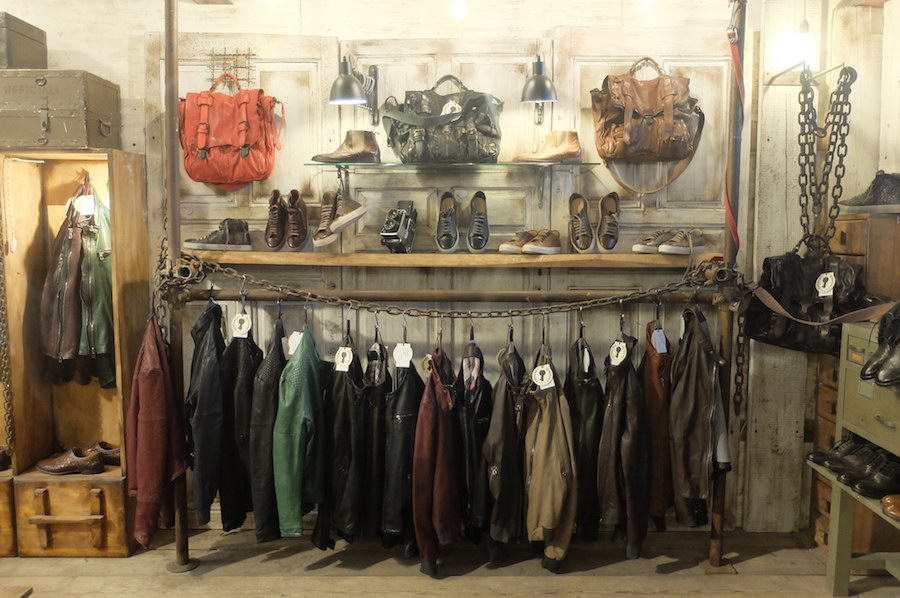 When it comes to quality leather jackets, our local favorite is Benheart, where the knowledgeable staff will show you what goes into a quality leather piece.
When it comes to quality leather jackets, our local favorite is Benheart, where the knowledgeable staff will show you what goes into a quality leather piece.
Shopping Tips
As a general rule, Florentine leather goods are not cheap, but often represent a good value considering the quality. The safest bet is to buy directly from the maker and to focus on small, portable items—boxes, change purses, eyeglass cases, albums, desk accessories—rather than apparel, which is more complex and tricky to get right. Many of these small items are completely handmade on site, and the prices are typically reasonable. They also make durable souvenirs and special gifts that are either easy to transport in your suitcase or relatively simple to ship.
Finally, don’t forget that Florentine artisans are masters of the made-to-measure. If you are in the market for a pair of handmade shoes, Florence boasts unparalleled opportunities to not only go home with a beautiful pair made just for you, but also to make a connection with the person whose labor and passion went into crafting this very personal souvenir.
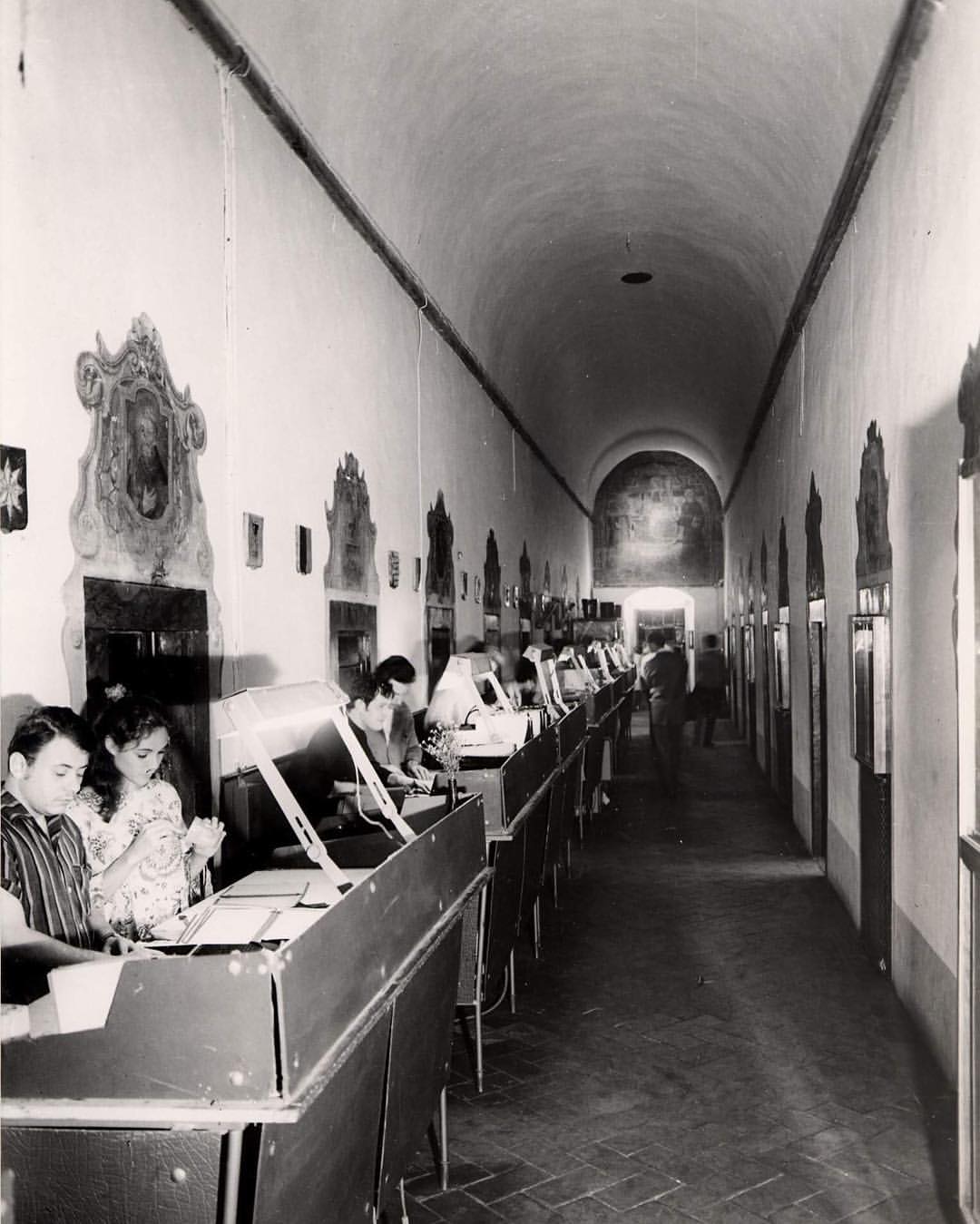 Photo by: Scuola del Cuoio, the Florentine leather school in operation since the 1950's and one of our top picks for Made in Italy souvenirs in Florence.
Photo by: Scuola del Cuoio, the Florentine leather school in operation since the 1950's and one of our top picks for Made in Italy souvenirs in Florence.
Where to Buy
Florence boasts two highly visible, bustling outdoor markets long known for their array of leather goods. The San Lorenzo Market boasts a variety of street vendors and retail stores selling leather items. The beautiful Mercato Nuovo, which has operated as an outdoor marketplace since the Renaissance, also overflows with bags, belts, and other leather goods but we suggest keeping purchases here to a minimum.
While the market vendors go out of their way to entice travelers, keep in mind that the markets are among the trickiest places to shop in Florence. You will need to use your expert skills of distinguishing higher from lower quality leather in order to ensure you make a purchase you’ll still be happy about when you get home.
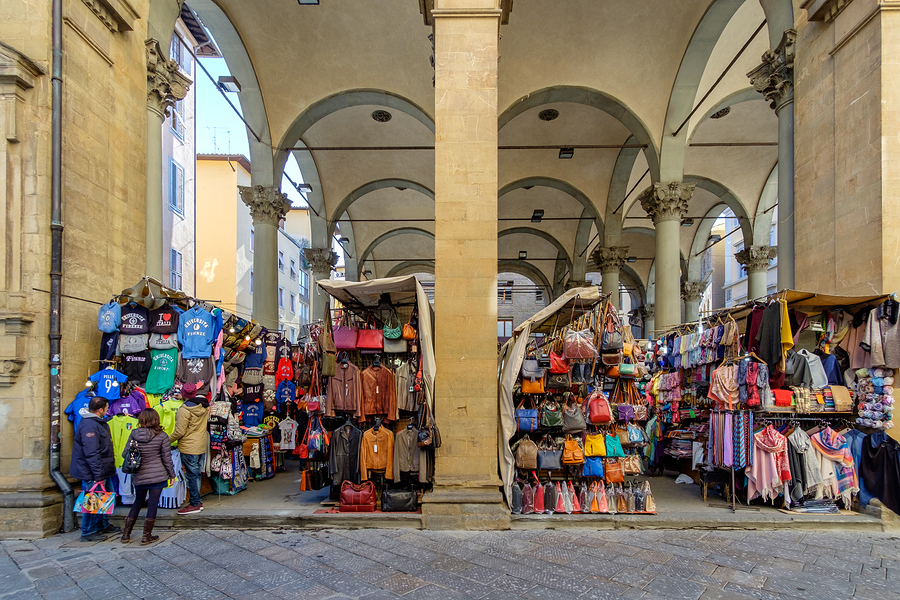 The Mercato Nuovo is also known as the "Porcellino" market for the bronze wild boar that is a popular tourist attraction. Nice to walk through but we wouldn't purchase leather here.
The Mercato Nuovo is also known as the "Porcellino" market for the bronze wild boar that is a popular tourist attraction. Nice to walk through but we wouldn't purchase leather here.
If you want to make a more confident purchase, consider the following destinations. You’ll not only immerse yourself the history of Florentine leather, but you are likely to pick up an authentic souvenir you’ll treasure as one of the fondest memories of your trip:
Benheart
Via della Vigna Nuova, 97r; 055/2399483
Via dei Cimatori, 25r; 055/0462638. Ps. Read our story about this Italy Magazine top shopping pick here.
Dimitri Villoresi Bags
Via dell’Ardiglione, 22
366/4534867
Digerolamo
Via del Moro, 58
055/2298378
Fratelli Peroni
Via G. Marconi, 82r
055/572520
Gucci Museum
Piazza della Signoria, 10
055/75923302
Leather School
Scuola del Cuoio
Piazza Santa Croce, 16
055/244533
Madova
Via Guicciardini, 1r
055/2396526
Mannina
Via Guicciardini, 16r
055/282895
Monaco Metropolitano
Via dei Ramaglianti, 6r
055/268121
Pelleterie Fiorentine
Via Sant’ Egidio, 31/r
055/245335
Roberto Ugolini
Via Michelozzi, 17r
055/216246
Via de’ Ginori, 23r (The name of the store is its address!)
055/2398031
Cuor di Pelle
Via dei Pilastri 7A R
+39 3290965746 - +39 055 3880404
If you can't make it to Florence anytime soon, check out our online shop, where we strive to give artisans a digital platform to sell their goods!

